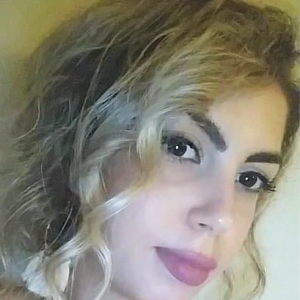Title : A long-acting bioactive patch consisting of copolymers with inherent antimicrobial properties
Abstract:
Statement of the Problem: Wound healing takes place in successive but overlapping stages involving cells, bioactive agents and the extracellular matrix. The last decades, a number of "bioactive" patches have been developed inspired by the normal mechanisms of healing, in order to treat chronic and incurable wounds where these mechanisms are often compromised. The aim of the present study is to synthesize and characterize a long-acting bioactive patch consisting of copolymers with inherent antimicrobial properties, reinforced with Arg-Gly-Asp (Arginylglycylaspartic acid - RGD) peptides and mesenchymal stem cells from adipose tissue (ASCs).
Methodology & Theoretical Orientation: For this purpose, 2 cases of co-polymers were synthesized and tested. Copolymers of biocompatible aliphatic polyester (TEHA-co-PDLLA), patterned with micro/nano structures using thermal Nanoimprint Lithography (T-NIL), which enhance the antimicrobial activity of L-poly(lactic acid) (PLLA), an aliphatic polyester with biodegradability, biocompatibility and exceptional mechanical and thermal properties and copolymers of chitosan (CS-SBMA) enriched with increased amounts of SBMA with inherent antimicrobial property of the base material, namely chitosan (CS), a linear semi-natural polysaccharide derived from chitin, which is a biocompatible, biodegradable and non-toxic polymer with enhanced antimicrobial and antioxidant activity. Moreover, the tripeptide RGD is found in all major ECM proteins and has been shown to enhance the adhesion and spreading of fibroblasts, endothelial cells and smooth muscle cells on different surfaces. Finally, ASCs have an important role in the healing process of the skin as well as in dealing with the deficits that arise due to aging. To do so, initially human ASCs were isolated by enzymatic digestion. The copolymers were primarily validated for its biocompatibility by performing MTT. The final goal was to provide a patch supplemented by coating the RGD peptide on its surface and further enhanced by seeding ASCs. To optimize the conditions for the best bioactivity of the final product, we beforehand assayed the response of ASCs to different concentrations of the RGD biopeptide (10, 20, 50 μg / ml) considering: 1. proliferation / viability / cytotoxicity by MTT, 2. cell adhesion with crystal violet cell adhesion assay. In order to further evaluate the biological activity of the final patch, the expression of genes that induce angiogenesis in ASCs by QPCR was examined. Finally, the candidate copolymers were assessed for potential their antimicrobial activity against the bacterium Escherichia coli (gram negative) and Staphylococcus aureus (gram positive).
Findings: The above experimental procedures showed an induction of cell adhesion in the presence of RGD in a dose-response manner suggesting a biological relevance. However, cell proliferation in ASCs were inversely proportional to the RGD concentration. Therefore, the minimum RGD concentration was chosen for maximum biological activity of the final patch. This is due to the potential cytotoxicity of the peptide or the degree of cell attachment to the material. The strong attachment of cells to the substrate is incompatible with the process of cell proliferation in which cells "loosen" their attachment to divide. Lower concentrations of RGD could be examined in future investigations, with the aim of determining the most suitable concentration that would allow induction of cell adhesion combined with maximal cell viability and induction of expression of angiogenic factors for wound healing. As for the expression of vasoactive agents in ASCs, we have an induction only in the patch of CS-SBMA. In vitro TEHA-co-PDLLA patch evaluation showed that the presence of RGD did not improve cell adhesion, proliferation or VEGF / Angiopoietin-1 expression in the final product. This may concern the topography and the properties of the material. Perhaps coating the material on its entire surface with the RGD peptide may have had negative consequences on the overall properties of the material, and perhaps its controlled placement during material preparation should be attempted. As for the antimicrobial properties, both patches showed satisfactory results, the CS-SBMA due to the chitosan’s properties, and the TEHA-co-PDLLA due to the nanostructures that prevent the growth of pathogenic microorganisms due to their geometry and arrangement in space.
Conclusion & Significance: In conclusion, the enhanced TEHA-co-PDLLA and CS-SBMA in vitro patches exhibits bioactive properties important for inducing wound healing. Further improvement could be achieved by using lower concentrations, considering alternative ways of incorporating RGD or by using similar peptides.



